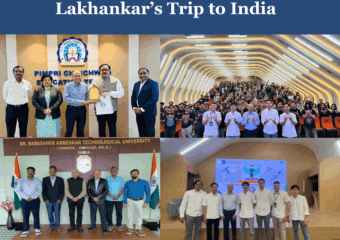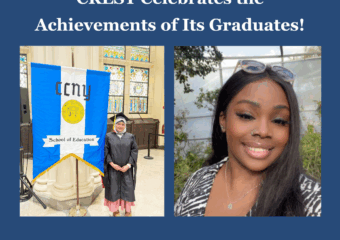CREST Co-Hosts the ‘How Things Work’ Eco-Literacy Conference
In partnership with New York City (NYC) Environmental Educators Advisory Council (EEAC), NYC Department of Environmental Protection (DEP) and James Baldwin Outdoor Learning Center, CREST co-hosted “How Things Work” Eco-Literacy Conference on March 5, 2024 in the Great Hall at the City College of New York (CCNY). The conference was well attended by two hundred (200) middle school, high school and college students and their teachers and fifty (50) environmental educators including sixteen (16) exhibitors that displayed different ecosystem focused demonstrations ranging from water quality monitoring to solar energy and green roofing.
The conference focussed on how environmental systems function in the face of climate change. The conference goal was to help participants build their eco-literacy by understanding how essential environmental systems work; understand the significant role they play; and feel empowered to take action in addressing environmental stewardship and climate resiliency.
Keynote speakers included Vanessa Valdes, Vice Provost for Community Engagement, CCNY and Matthew Washington, Vice President and Chief of Staff, Phipps Houses. The event was kicked off with welcoming remarks by Richard Rivera, The City University of New York Doctoral Student and (NOAA) Center for Earth System Sciences and Remote Sensing Technologies II (CESSRST) Cohort 2 Fellow, and 2023 CUNY CREST High School Initiative in Remote Sensing of the Earth Systems Engineering and Sciences (HIRES) Mentor; Cole Frost, New York University (NYU) student intern from the Climate and Resilience Education Task Force; Ray Pultinas, Environmental Education Advisory Council (EEAC) and James Baldwin Outdoor Learning Center (JBOLC).
The conference included several diverse exhibitions demonstrating important topics including:
- The New York City Department of Parks & Recreation (Sustainable Facilities)– How a green roof works
- Trust for Public Land– How greenery absorbs water, prevents runoff and helps to reduce the impact of climate change
- Sanitation Foundation – How waste is processed beyond curbside pickup
- Empire Clean Cities– How a hydrogen fuel cell bus works
- The Bronx is Blooming-How to make a “Seed Bomb or Ball”
- Sims Municipal Recycling (Balcones Recycling)- How to recycle In NYC schools & homes
- Lower East Side Ecology Center– How composting food waste helps to combat climate change and promote environmental stewardship
- New York City Department of Health and Mental Hygiene– How climate change contributes to Mosquito-Borne Disease in NYC (How diseases are transmitted by mosquitoes and how disease can be prevented)
- New York City Department of Environmental Protection– How the NYC water supply system works & how the NYC wastewater treatment system works
- Billion Oyster Project- How Oysters Work to Protect Water Quality
- WhyMaker– How a windmill works
- Solar One – How a Solar Collector Works
- North Brooklyn Parks Alliance– How to build a native plant nursery in NYC
- New York League of Conservation Voters Education Fund: How an electric school bus works
- New York League of Conservation Voters Education Fund (NYLCVEF)
- Climate and Resilience Education Task Force (CREFT) New York City Comptrollers Office-How to promote climate change education in New York State
- DURO UAS– How to evaluate water quality by measuring pH and ORP (Oxygen-Reduction Potential)
- CUNY CREST Institute– How a Weather Station Works
The conference was engaging, informative, and productive. Commenting on her experience of closely working with the partners who led this effort at CCNY, Dr. Merchant said, “The event helped create a sense of awareness among the younger generation of students, and professionals, and helped connect with their environment with deeper understanding and respect for services our ecosystems provide for humans.”




